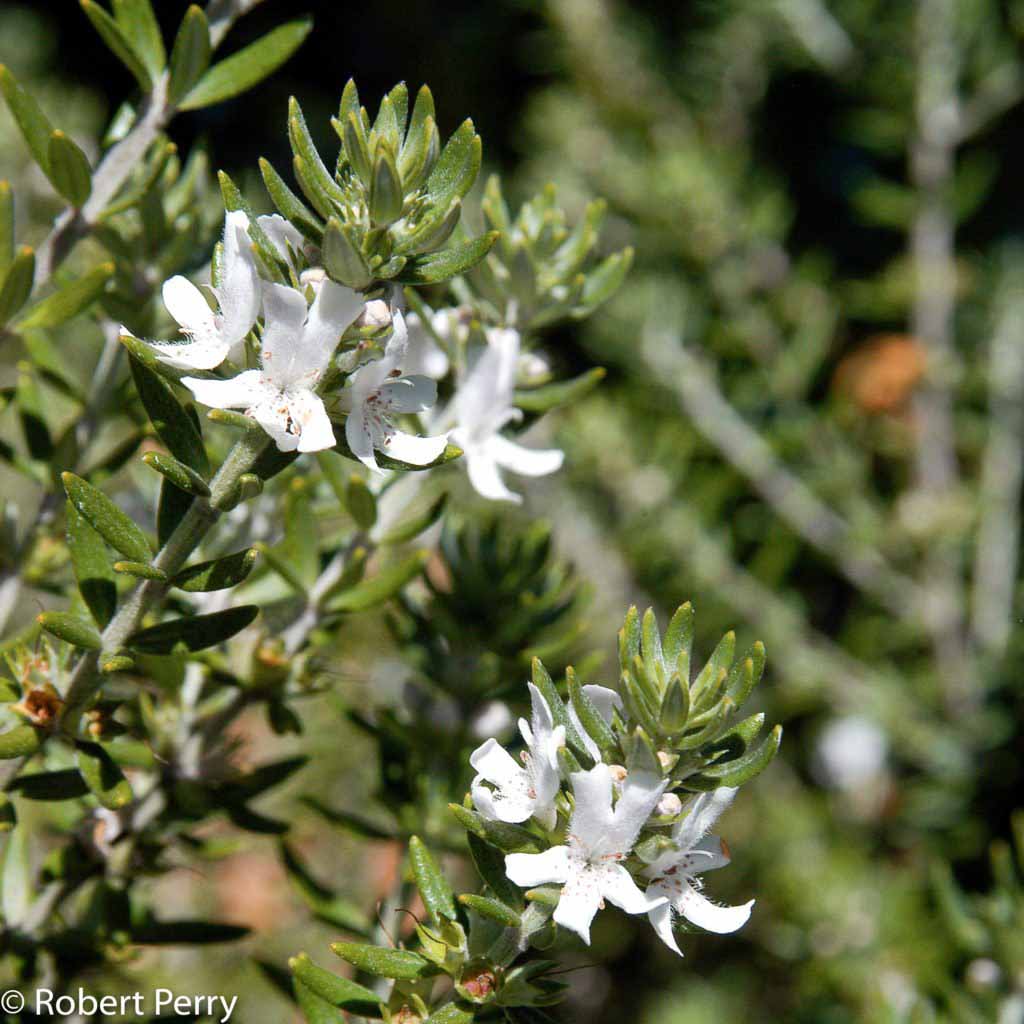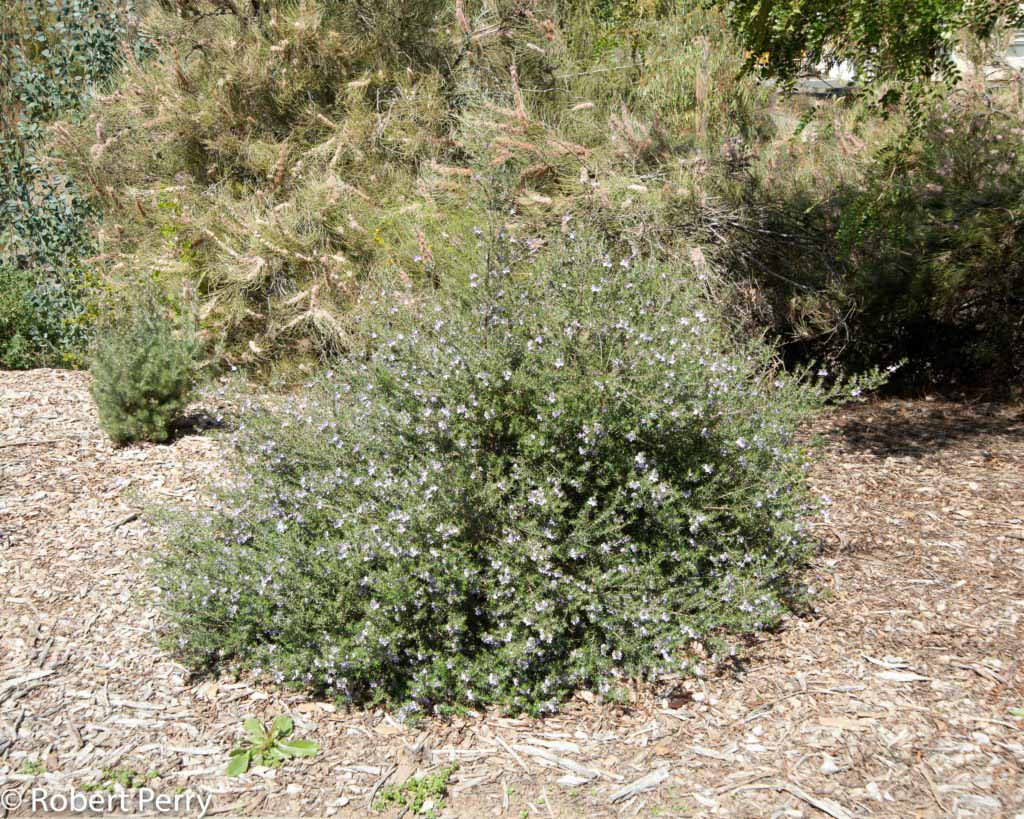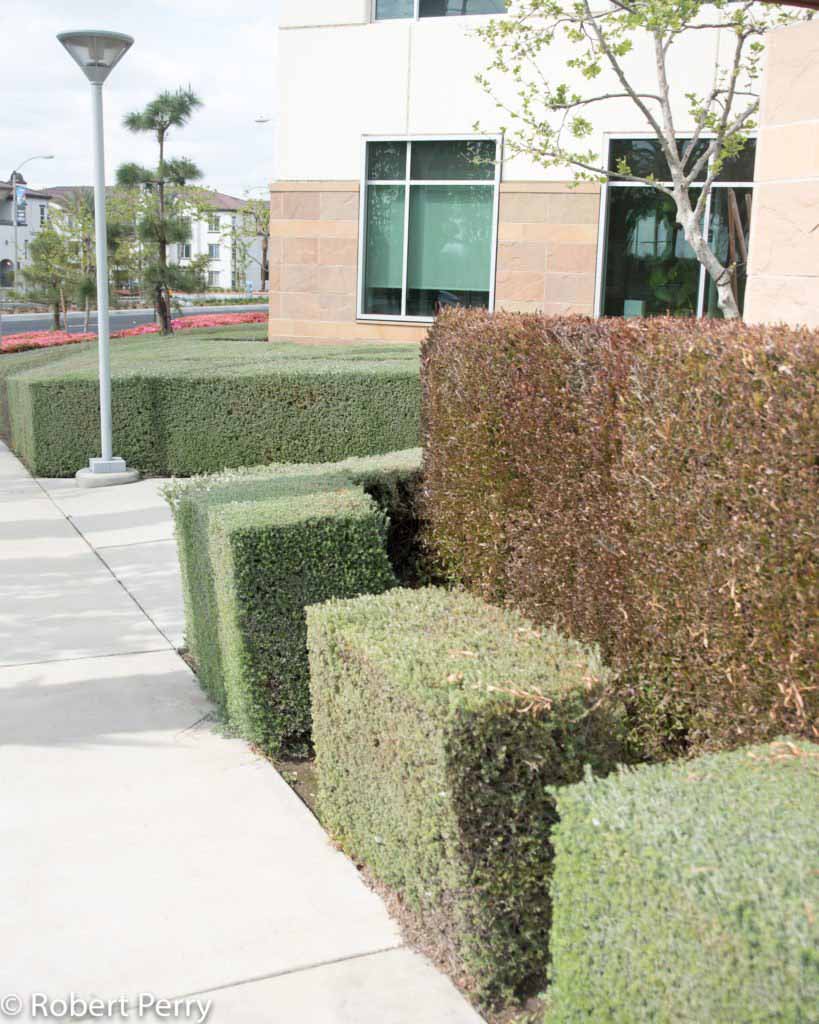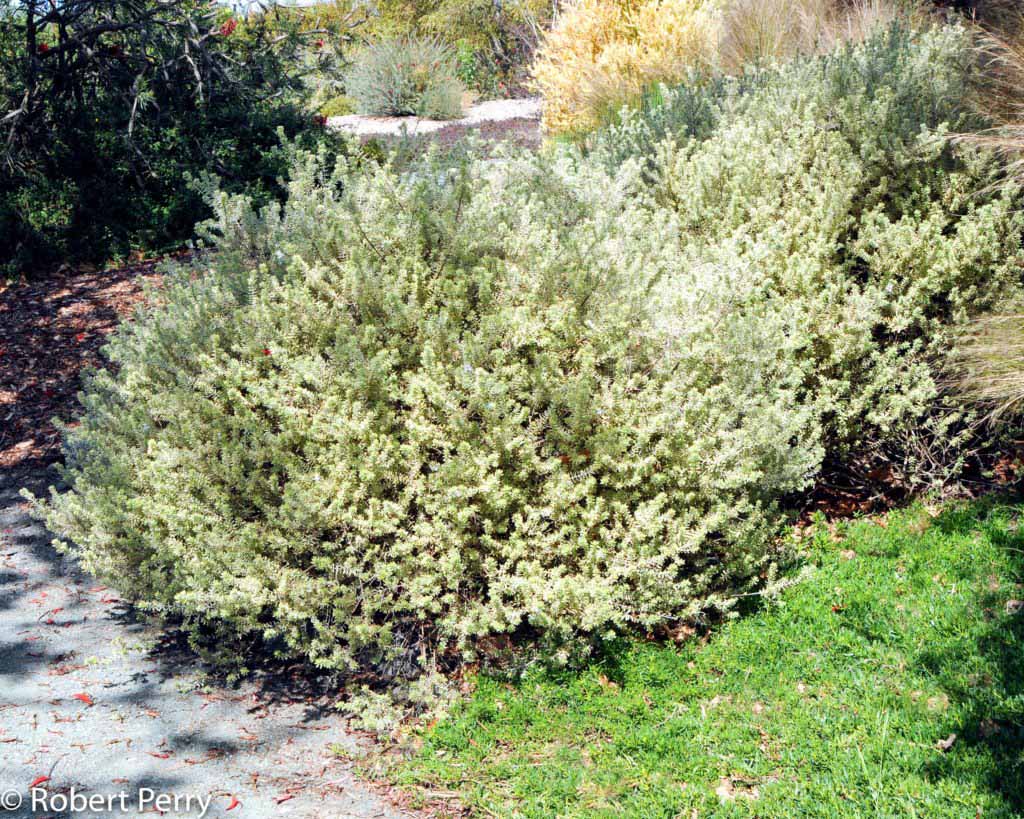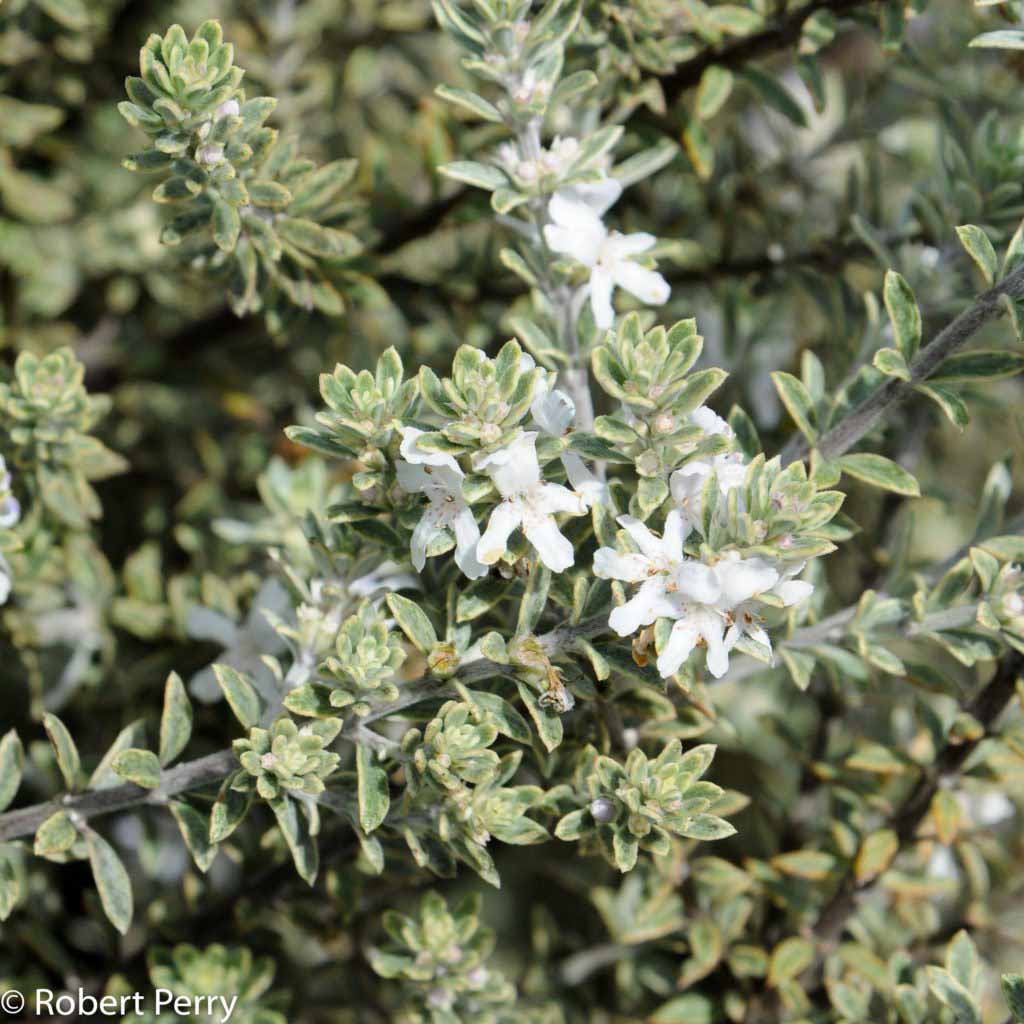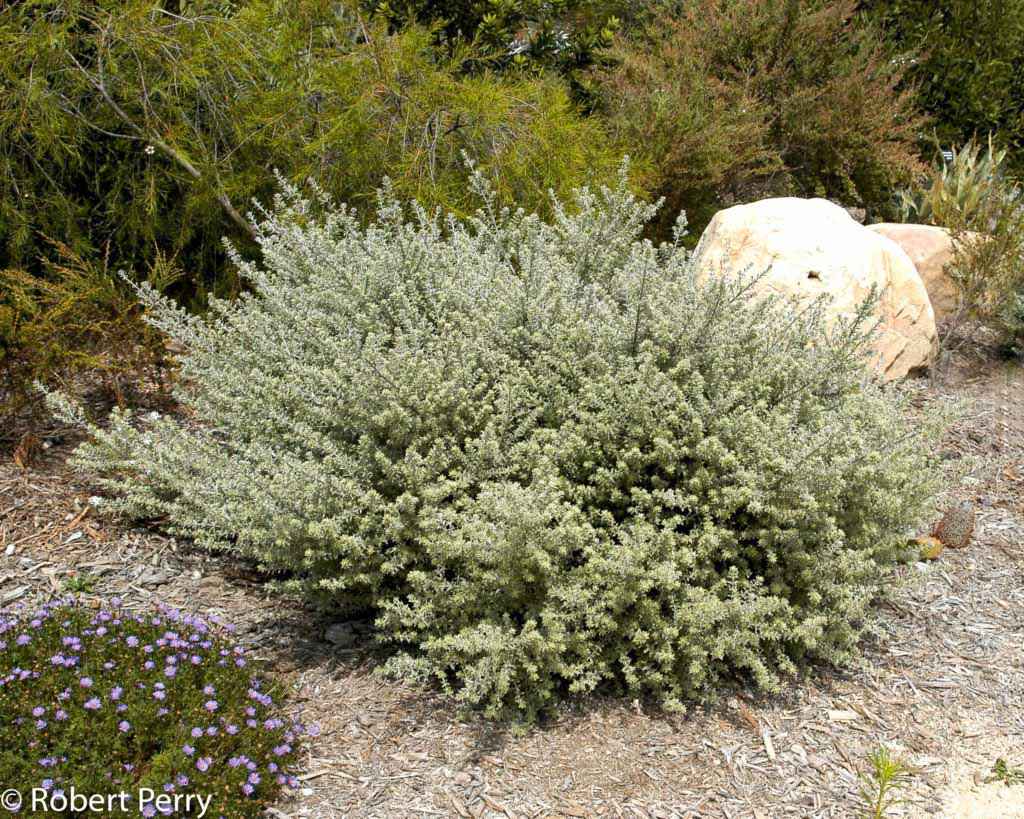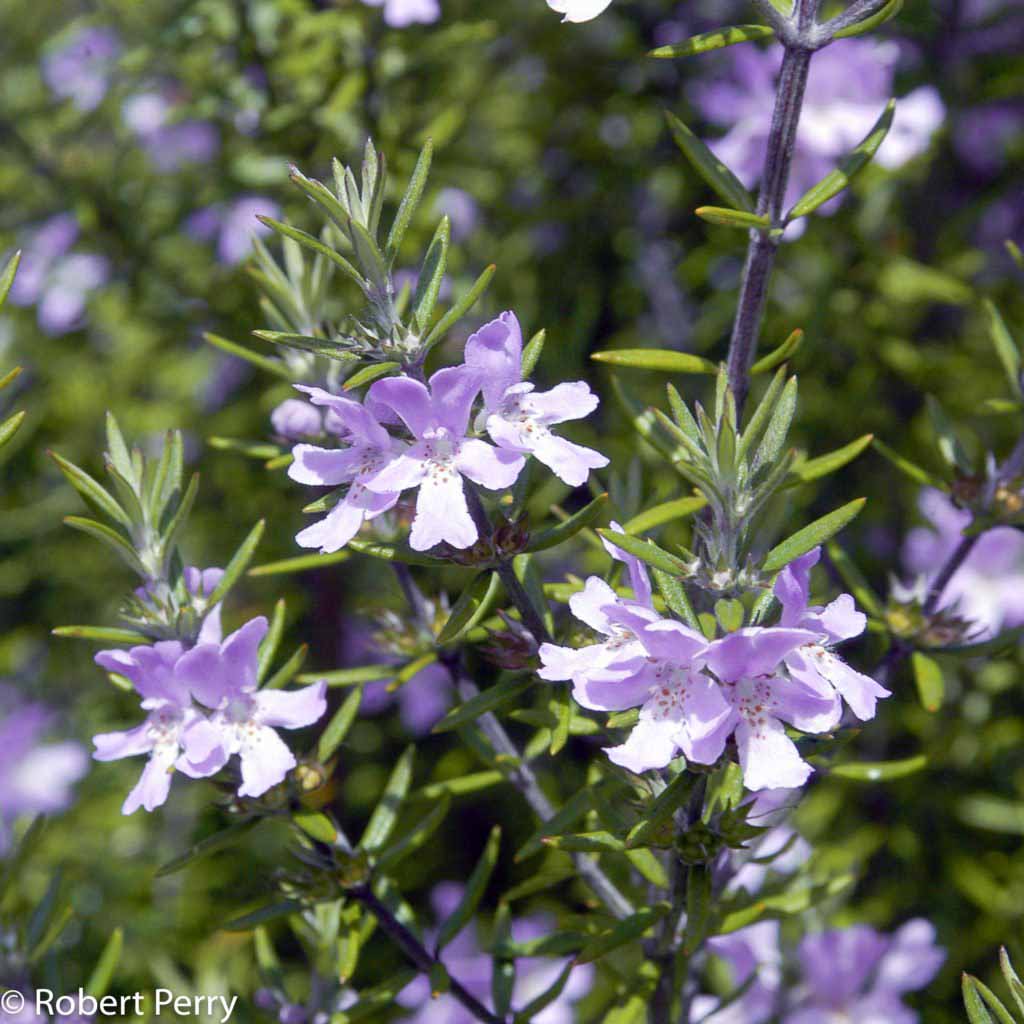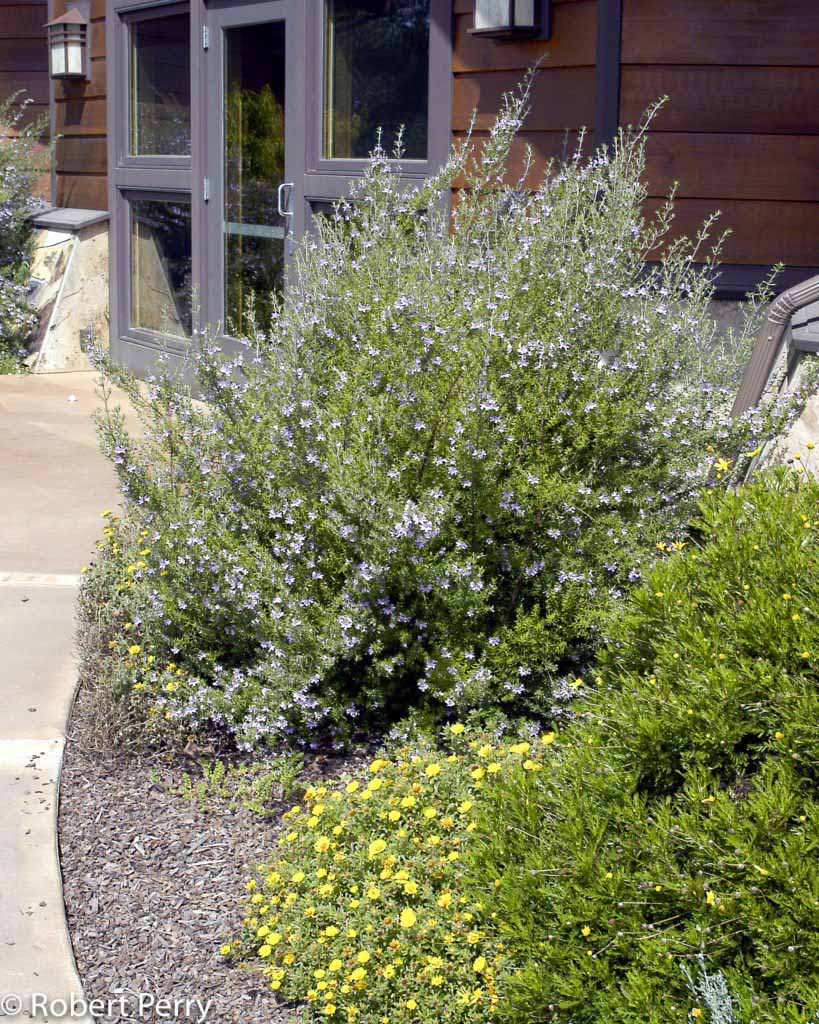Please note:
For most situations, we would not recommend installing this plant in new gardens, landscapes, or plantings in southern California.
Coast rosemary is often used in commercial landscapes where it becomes hedged into blocks or blobs. While it is tough as long as it receives water and can tolerate extreme acts of hedging, these are about the only positive things we can say about it. It is a sort of boring plant and there are many more exciting options to choose from.
Depending on conditions, our top recommended plants to consider planting instead of coast rosemary include lemonade berry, Eve Case coffeeberry, Centennial coyote brush, creeping barberry, or deer grass if a low hedge is needed. If a shrub is needed, there are an abundance of interesting recommended plants to be found using this site’s Plant Finder.
This plant profile is included in this site as a reference for two primary reasons:
- If you already have this plant in your landscape, this information can be used to know how to care for it.
- If you already have this plant in your landscape, you can use this information to learn which of our recommended plants have the same recommended watering needs, making them potential choices for grouping together if you will be adding new plants to the existing area.
In general, instead of this plant, we recommend planting appropriate California native plants whenever possible.
In addition to their beauty, California native plants offer the most additional benefits beyond just low water use, including habitat for the birds, butterflies, and pollinators who evolved here with them. This adds value and beauty in your landscape beyond just a pretty plant, allowing the landscape to actively contribute to the environment instead of just using less water. You can find our top recommended native plant choices on our Plant Finder by selecting “California Native” and learn more about California native plants here.
To learn what exactly California native plants are and how they are different from other low water plants, visit this link.
For visual interest or other reasons, some people may also want to mix in other non-native low-water demanding plant choices even though they do not have the same ecological value as native plants. For that reason, we feature a number of non-native waterwise selections on this site as well. However, we see native plants as the best “go to” for most landscape or garden choices! We encourage people to consider planting at least 50% of their landscape to native plants. See our Garden Designs section or visit our Waterwise Demonstration Garden in Montclair for plenty of inspiration.
————————————————————————————————————————————————
Coast rosemary naturally occurs in southeast Australia where it is native to sand dunes and coastal bluffs in both sandy and alkaline soils, and where it endures daily wind and salt spray. It is a fine textured evergreen shrub mounding 5-6 ft. tall, capable of spreading 5-8 ft. wide. Small rosemary-like leaves grow to 1/2 in. long, are pale green above, white below and occur in whorls on whitish stems. Small white flowers occur at the tips of branches where they provide modest accent character during spring and intermittently throughout warm periods of the year.
It grows best in sunny locations, in well-drained soils and reduce watering during the summer. It gets few pests or problems, and is tolerant of temperatures to 10-15°F. Cultivars include: W. f. ‘Morning Light’ has yellow-green foliage with white margins and white flowers, grows 3 ft. tall, 4-6 ft. wide, and W. f. ‘Smokey’ grows to 5-6 ft. tall and as wide with pale gray foliage and white flowers.
